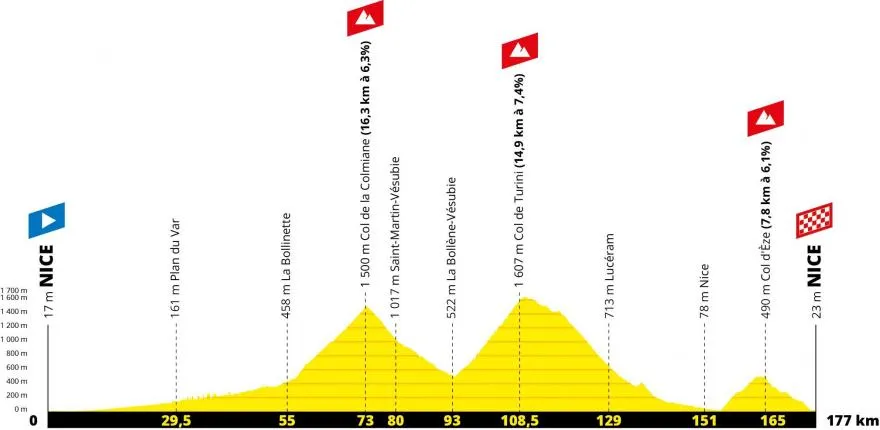The 2020 Etape du Tour sportive will be run over stage two of the Tour de France, with three mountain passes and more than 3,750m of climbing in the Southern Alps.
Nice will welcome riders on Sunday 5 July 2020 for the 30th edition of the hugely popular sportive – the first to take place on the south coast of France.
In another first, the 177km route is a loop. That is, the course starts and finishes in Nice, neatly eliminating many of the logistical issues facing riders on a point-to-point route typical of the Etape.
- Tour de France 2020 route revealed | gravel, 6 mountain finishes, no TTT
- 8 key climbs from the 2020 Tour de France | Epic ascents to watch or ride
Unlike in recent years, the sportive will be staged after the Tour peloton has tackled the stage (Sunday 28 June), on a route that twice climbs above 1,500m on the Col de la Colmiane and Col de Turini before finishing with the Col d’Eze, an icon of the Paris-Nice stage race.
Grand Départ
With the 2020 Tour de France starting in Nice, penned between the Southern Alps and the Mediterranean, the Grand Départ is unusually mountainous, featuring a number of punchy climbs on stage one before heading to altitude on stage two.
That, of course, is the stage awaiting Etape riders, who will start from the Promenade des Anglais in Nice and head along the coast to warm the legs, before turning inland on a false flat.

Col de Colmiane (16.3km at 6.3%)
The first climbing challenge will be the Col de Colmiane (sometimes known as the Col Saint-Martin) – a feature of Paris-Nice in both 2017 and 2018.
British rider Simon Yates was victorious on the climb in the latter edition, though on that occasion it was tackled from the opposite direction.
L’Etape du Tour 2020 riders will take on the 16.3km ascent from La Bollinette, where the climb boasts an average gradient of 6.3 per cent.
Col de Turini (15.3km at 7.2%)
After a 20km descent, things then ramp up again with the Col de Turini, the second major climb of the day.
After featuring in the 2019 Paris-Nice, where Daniel Felipe Martinez claimed stage honours, and Team Ineos’s Egan Bernal moved into the yellow jersey, the climb is back at the Tour de France after a 47-year absence.
The climb will be tackled in the same direction it was in Paris-Nice, up its western ascent. From that direction it is 15.3km long with an average gradient of 7.2 per cent and a steepest section nearer 9 per cent.
Col d’Eze (7.8km at 6.1%)
The longer, shallower south-eastern side forms the descent, before a Paris-Nice classic rounds off the climbing challenges: the Col d’Eze.
At 7.8km, and with an average gradient of 6.1 per cent, the Col d’Eze may be shorter than the climbs that come before it, but it’s the most iconic ascent on the route because of its regular inclusion as the final (and frequently decisive climb) in Paris-Nice.
The Race to the Sun often uses the Col d’Eze for a time trial, which Sean Kelly won five times and Sir Bradley Wiggins completed in a record 19 minutes 12 seconds in 2012. Strava suggests an average time of 40 minutes for men and 47 minutes for women is a more realistic benchmark for L’Etape riders to target, though the climb will come after a long and arduous day in the saddle.
The route then sweeps back down into Nice for a finish on the seafront.
Registration for the 2020 Etape du Tour sportive opens at 3pm UK time on Monday 21 October on the Etape du Tour website.
